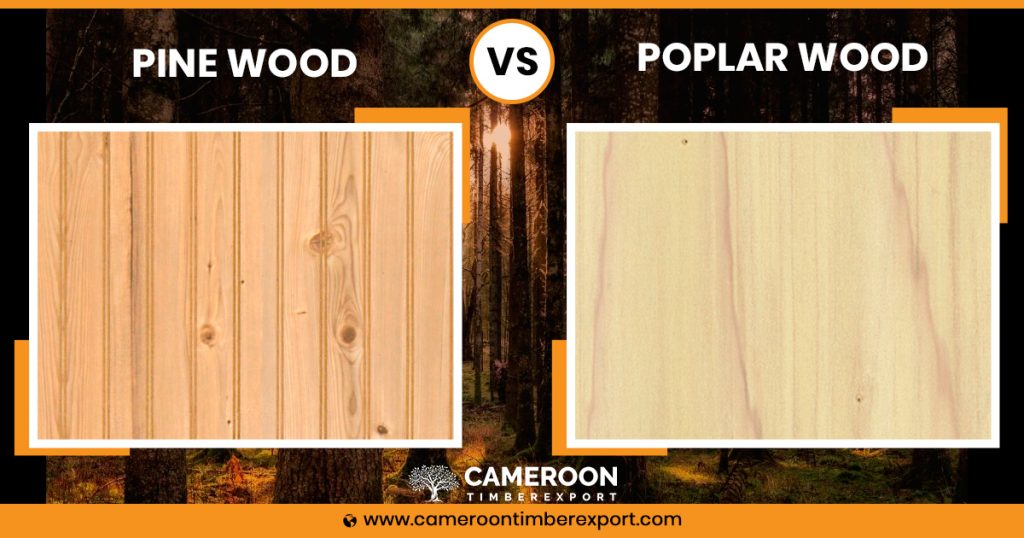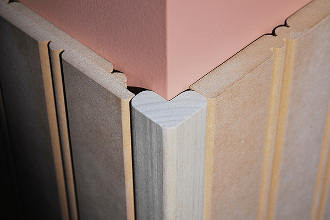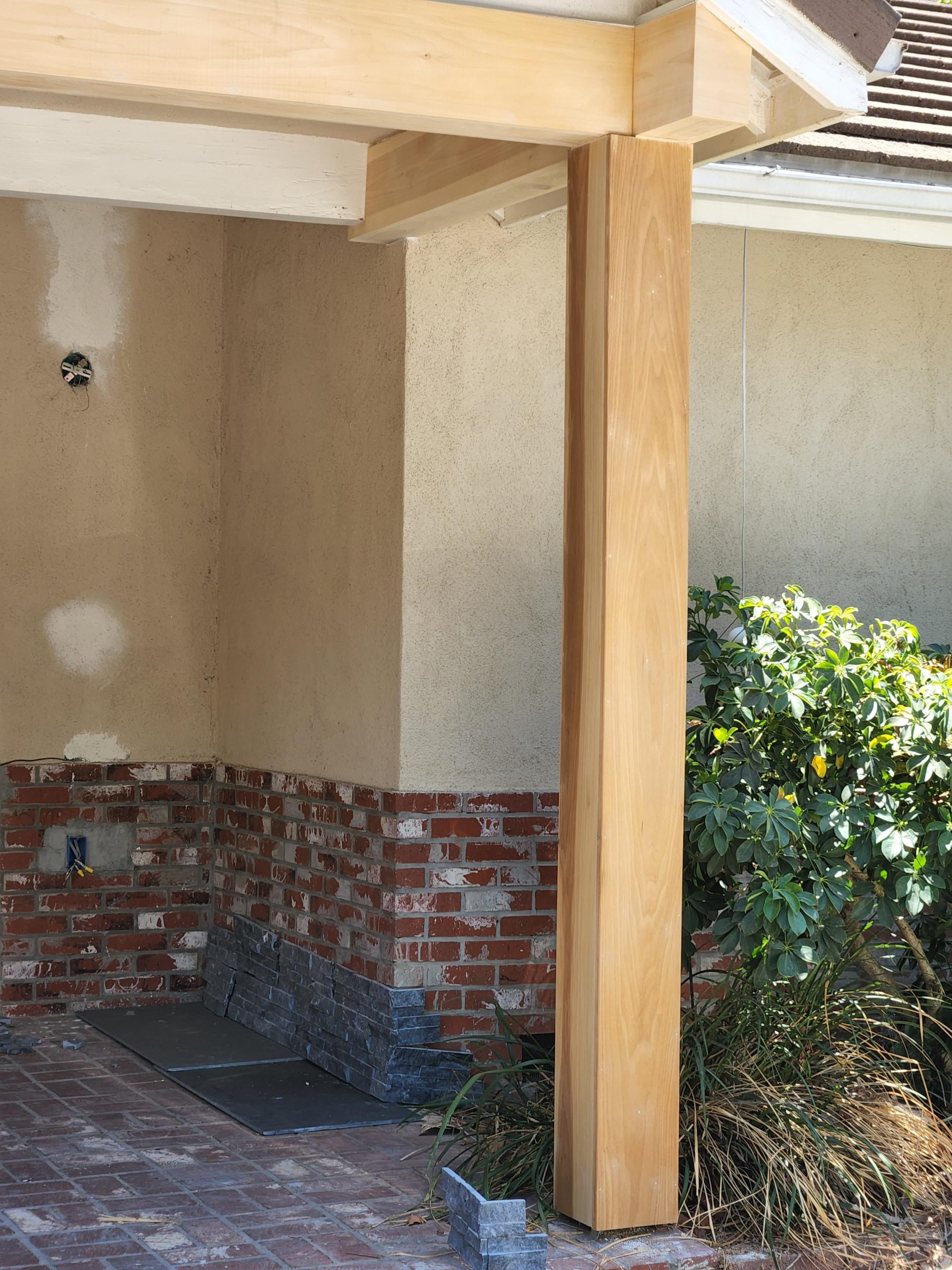Yes, poplar can be used outside, but it needs proper treatment. Without protection, it can rot quickly due to moisture and weather exposure.
Poplar wood is popular for indoor projects because it’s easy to work with and affordable. But many wonder if it can hold up outdoors. The truth is, poplar isn’t naturally durable when exposed to the elements. Untreated, it can absorb water and become a target for pests.
However, with the right treatment, such as sealing or painting, poplar can be used for outdoor furniture, trim, or even garden structures. This blog post will explore how to properly prepare poplar for outdoor use and the best practices to ensure it lasts. By understanding these methods, you can confidently use poplar in your next outdoor project.

Credit: cameroontimberexport.com
Introduction To Poplar Wood
Poplar wood is light and soft. It is easy to work with. Poplar is usually pale in color. It can have a greenish tint. The grain is straight and uniform. Poplar is less dense than many hardwoods. It is one of the cheaper options. It does not hold up well to moisture. So, it can rot easily if not treated.
Poplar is used in making furniture. It is also used in cabinetry. Many people use it for interior trim. It is great for painted projects. It is also used in making toys. Poplar can be used for plywood. It is not often used outside due to its poor resistance to water.
Benefits Of Using Poplar Outdoors
Poplar wood is very affordable. It costs less than many other woods. This makes it a budget-friendly choice for outdoor projects.
Poplar wood is easy to work with. You can cut and shape it without much effort. It also takes paint and stain well, offering versatile design options.
Poplar is a sustainable choice. It grows quickly and is abundant. Using poplar helps reduce the demand for more endangered woods.
Drawbacks Of Using Poplar Outdoors
Poplar wood is not ideal for outdoor use. It lacks natural resistance to moisture and insects, leading to quick deterioration. Frequent maintenance is necessary to extend its lifespan.
Durability Concerns
Poplar wood is not very strong. It can bend or break easily. This makes it a poor choice for outdoor use. Heavy rain and strong winds can damage it. The wood can also warp or crack over time. It is not as tough as oak or cedar.
Susceptibility To Rot
Poplar rots quickly when wet. This can ruin the wood. Moisture is a big problem for poplar. It does not handle damp environments well. Bugs also like to eat poplar. This makes it even weaker.
Maintenance Requirements
Poplar needs a lot of care. Regular sealing is needed to protect it. This takes time and effort. Without care, the wood will not last long. Paint can help, but it needs to be done often. This can be a hassle for many people.
Treatments To Enhance Poplar’s Durability
Sealing and staining are essential for protecting poplar wood. Sealing helps keep out moisture and prevents rot. Staining gives the wood a nice color. It also adds an extra layer of protection. These steps help the wood last longer outside.
Pressure treatment involves forcing chemicals into the wood. This makes the wood resistant to bugs and fungi. Treated poplar can last many years outside. It is a good option for outdoor projects.
Weatherproofing techniques include using sealants and paints. These methods help keep out water and sun damage. Regular maintenance is key. You may need to reapply every few years. This keeps the poplar wood strong and beautiful.
Best Practices For Using Poplar Outdoors
Poplar wood is best for furniture and decorative items outside. It can be used for garden benches, fences, and sheds. Poplar is a versatile wood but not very durable. For longer-lasting items, it needs extra protection.
Always seal poplar wood before using it outside. Use a good wood sealer or paint. Install poplar wood in dry areas if possible. Avoid placing it in direct contact with the ground. Elevate the wood to prevent moisture damage.
Check poplar wood items every few months. Look for signs of damage like cracks or rot. Reapply sealer or paint as needed to keep the wood protected. Clean poplar wood with a mild soap and water solution. Dry it well after cleaning.

Credit: www.thegritandpolish.com
Comparing Poplar With Other Woods
Cedar is naturally resistant to rot. Poplar is not. Cedar is used for outdoor projects. Poplar is mainly for indoor use. Cedar has a pleasant smell. Poplar has a faint odor. Cedar is more expensive than poplar. Poplar is easy to find and buy. Cedar is often reddish or brown. Poplar is usually pale or light-colored.
Pine is more durable outdoors. Poplar is less durable. Pine can resist insects. Poplar attracts insects. Pine is stronger than poplar. Poplar is softer and dents easily. Pine is often used for outdoor furniture. Poplar is best for indoor projects. Pine has a distinct grain pattern. Poplar has a smooth, straight grain.
Redwood is very durable outside. Poplar is not. Redwood resists rot and decay. Poplar does not. Redwood is more expensive. Poplar is cheaper. Redwood has a rich, red color. Poplar is pale. Redwood is often used for decks. Poplar is used for furniture and cabinets. Redwood is also resistant to insects. Poplar can get damaged by insects.
Projects Suitable For Outdoor Poplar
Poplar is a good choice for outdoor furniture. It is easy to work with. Poplar can be painted or stained. This wood is also lightweight. But, it needs a sealer to last longer.
Garden structures can be made from poplar. It is affordable. Poplar is also easy to shape. Use it for trellises or plant supports. Like furniture, sealing is important.
Poplar is great for outdoor decorative elements. Make signs, trims, or small sculptures. It can be carved and painted easily. Again, sealing helps it last.
Conclusion And Recommendations
Poplar can be used outside with proper treatment and maintenance. It is not naturally durable and needs protection from moisture and pests. Regular sealing and painting can extend its lifespan outdoors.
Summary Of Key Points
Poplar is lightweight and easy to work with. It is not very durable outdoors. It needs to be treated to last longer. Without treatment, it can rot and decay quickly. Poplar is cheaper than other woods. It can be a good choice for some outdoor projects. But it is not the best option for long-term use. Proper maintenance can help extend its life.
Final Thoughts On Using Poplar Outdoors
Poplar can be used outside with the right care. Regular sealing and painting are necessary. It is best for temporary structures. For long-lasting projects, choose a more durable wood. Poplar is ideal for budget-friendly and short-term solutions. Always check the wood’s condition regularly. This ensures safety and longevity. Proper treatment and maintenance are key.

Credit: americanbeadboard.com
Frequently Asked Questions
Can Poplar Wood Be Used Outdoors?
Poplar wood is not ideal for outdoor use. It lacks natural resistance to decay and insects. It can warp, crack, or rot when exposed to moisture.
How Can Poplar Be Protected Outside?
To protect poplar outdoors, apply a quality sealant or paint. Regular maintenance is necessary to prevent damage from weather and pests.
Is Poplar Wood Weather-resistant?
Poplar wood is not naturally weather-resistant. It requires treatment with sealants or paints to withstand outdoor conditions effectively.
Does Poplar Need To Be Treated For Outdoor Use?
Yes, poplar wood needs treatment for outdoor use. Applying sealants or paints helps protect it from moisture, insects, and decay.
Conclusion
Poplar can be used outside, but it’s not the best choice. It lacks durability compared to other woods. Treating it can help, but it still may not last long. For better results, consider woods like cedar or teak. They resist weather better and last longer.
Choose wisely for your outdoor projects. Proper wood selection saves time and money.

